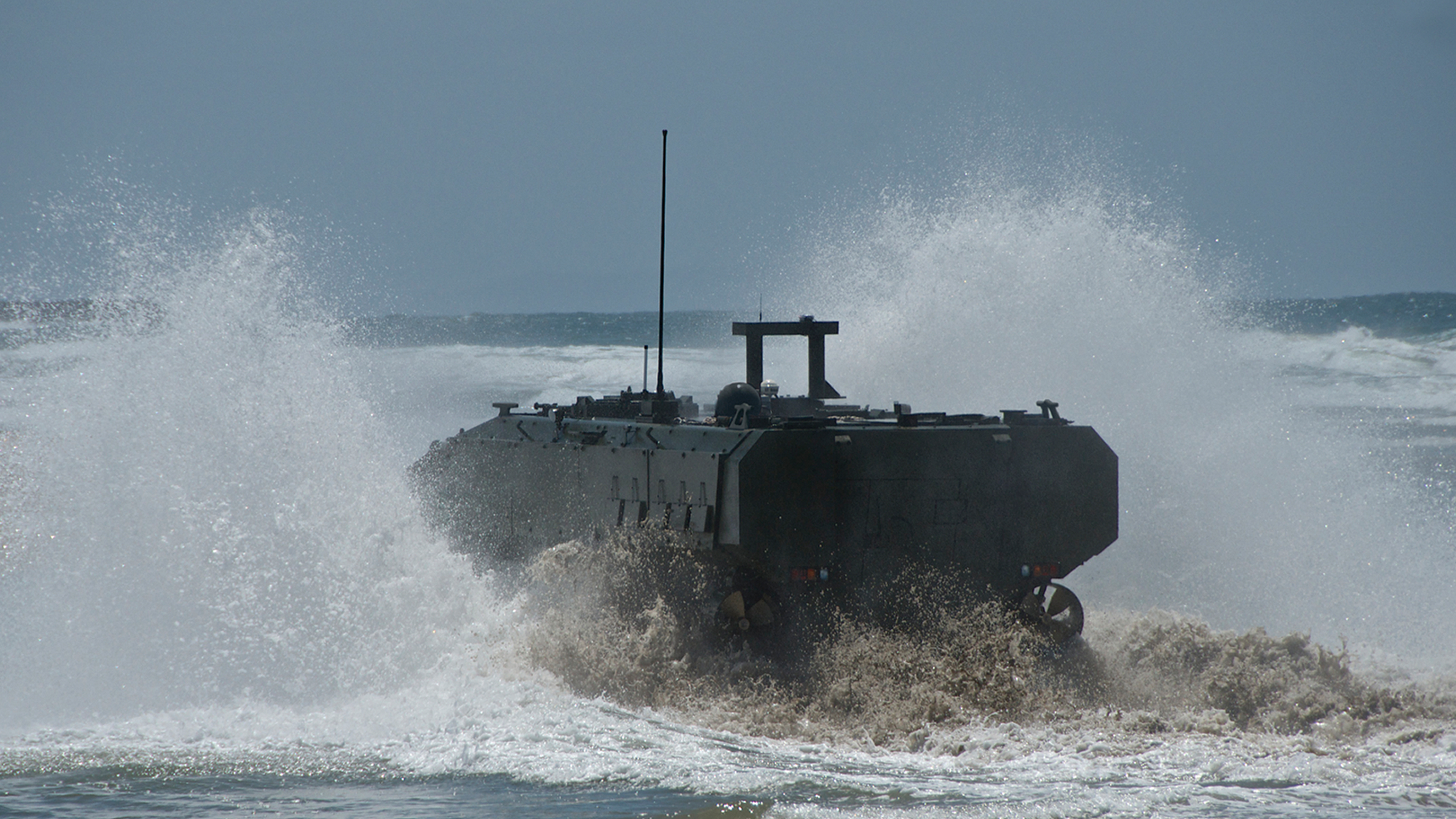
This post has been updated to remove references to an engineering contract related to work on a high water speed increment of the ACV. The Marine Corps inadvertently posted an old notice on FedBizOpps that discussed a contract option that was never exercised. The service will pursue high water speed research but did not begin work under that particular contract option.
The Marine Corps released its request for proposals for the engineering and manufacturing development phase of the Amphibious Combat Vehicle program, which will replace the Vietnam War-era Amphibious Assault Vehicles.
After several attempts to replace the AAVs failed due to the high cost of trying to achieve high water speed for the connectors, the Marine Corps has settled on an incremental approach that will begin with a lower-speed “modified non-developmental” vehicle and add capabilities and mission-based variants later on.
The Program Executive Office for Land Systems released the RFP on March 26, which explained that multiple fixed price incentive contracts will be awarded in the EMD phase to maintain competition in the program. The announcement on FedBizOpps did not specify how many of the 16-vehicle EMD contracts will be awarded, but Marine officials have previously said they would award two. Prior to a Milestone C acquisition decision, the Marine Corps will select a single vendor for Low-Rate Initial Production, which will be 60 vehicles, and the follow-on Full-Rate Production contract for 148 vehicles.
The RFP states the Marine Corps will award contracts based on “best value,” not lowest price or highest capability. Though the competitors will only be judged based on the requirements of the ACV 1.1 increment, Marine Corps Commandant Gen. Joseph Dunford told reporters last month that the likely competitors are close to reaching the more advanced Increment 1.2 requirements.
Likely ACV competitors include BAE Systems, General Dynamics Land Systems, Lockheed Martin and SAIC.
Lt. Gen. Kenneth Glueck, deputy commandant for combat development and integration, said the Marine Corps could not hold the competitors to the higher requirements now, but if the companies selected for the EMD phase are more advanced, the Marine Corps could move to Increment 1.2 faster.
The first increment requires seating for 10 Marines, whereas the second will require 12 or 13. The second increment will have to swim in 3-foot significant wave height instead of 2 feet, and the second increment will include mission-specific variants, including command and control, logistics, recovery vehicle and possibly firepower, Glueck told USNI News last month.
The RFP outlines the capabilities the ACV will need to have in water operations, with a particular emphasis on water speed and reserve buoyancy – needed if the vehicle were to achieve high water speed and plane above the water instead of swimming through it– as well as capabilities needed for land operations; carry and payload, with an emphasis on carrying embarked Marines; protection; and integration of remote weapon systems.
As work progresses on increments 1 and 2, the Marine Corps will also pursue research and development related to high water speed transit. If high water speed can be attained through improved propulsion systems and lighter vehicle while still maintaining a high level of troop protection, the Marine Corps may choose to eventually develop an ACV 2.0 that skims over top of the water instead of swimming through it.





